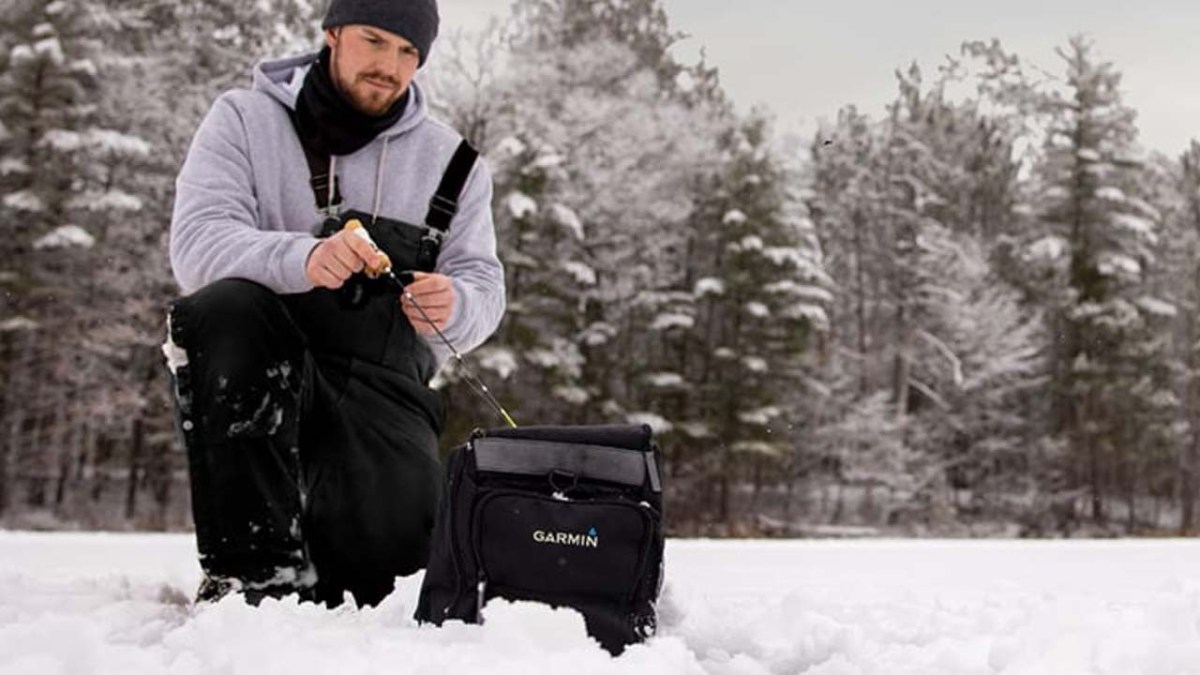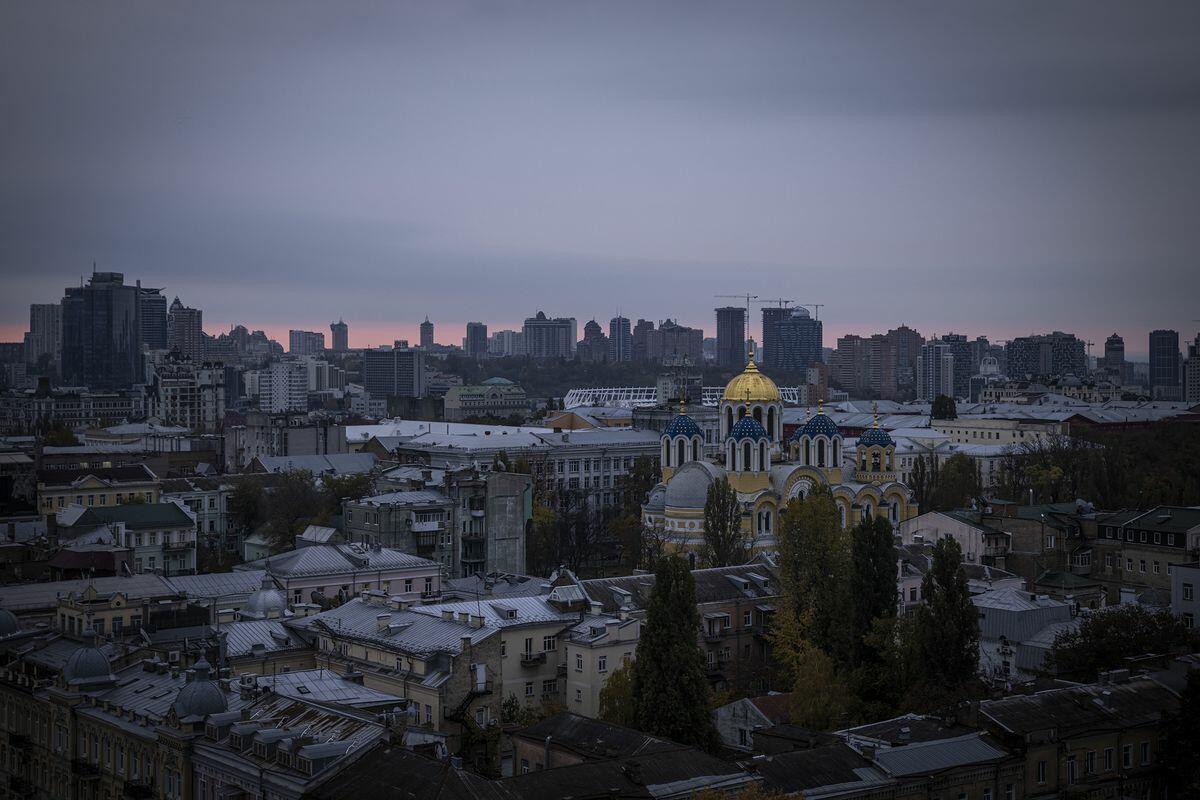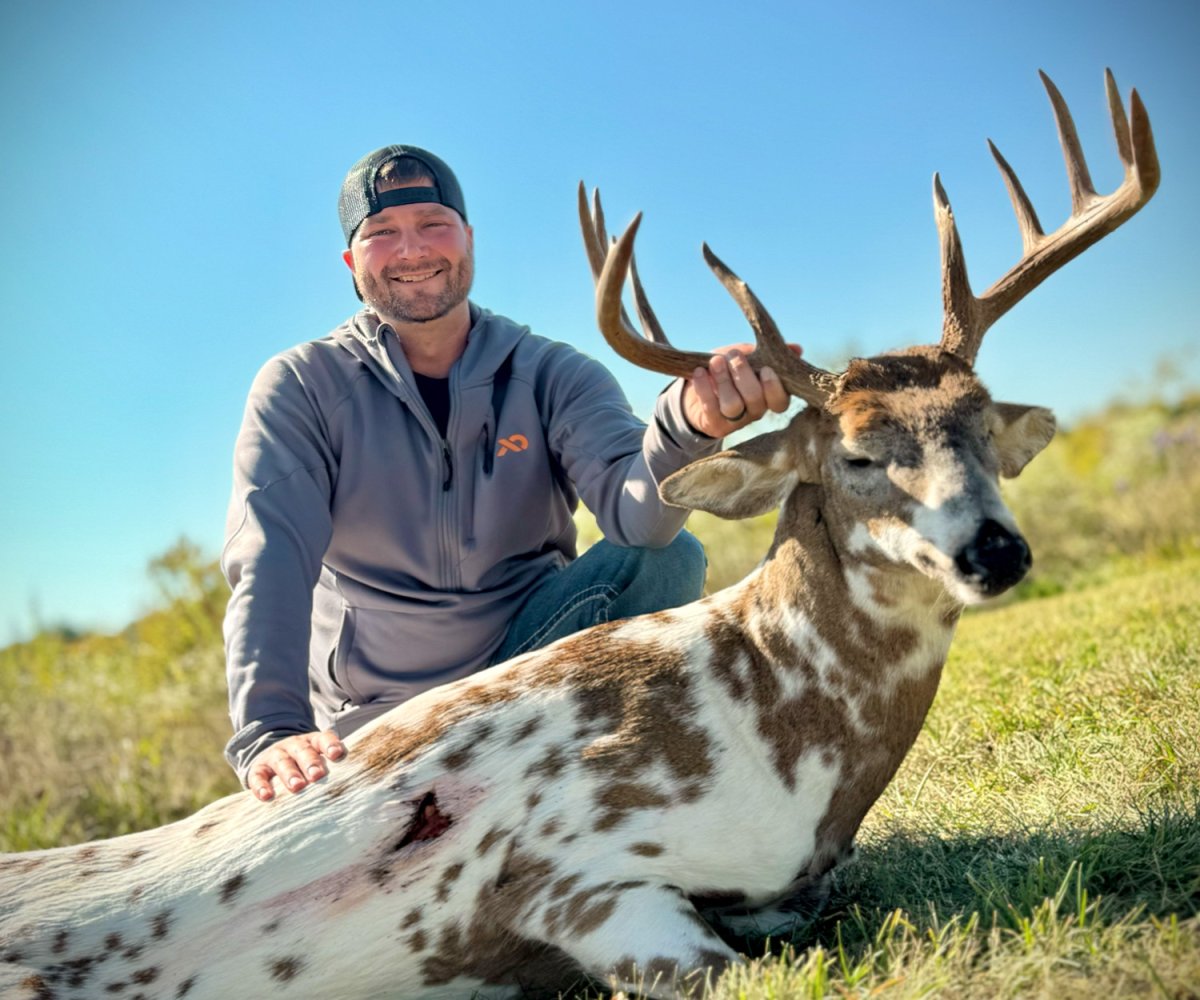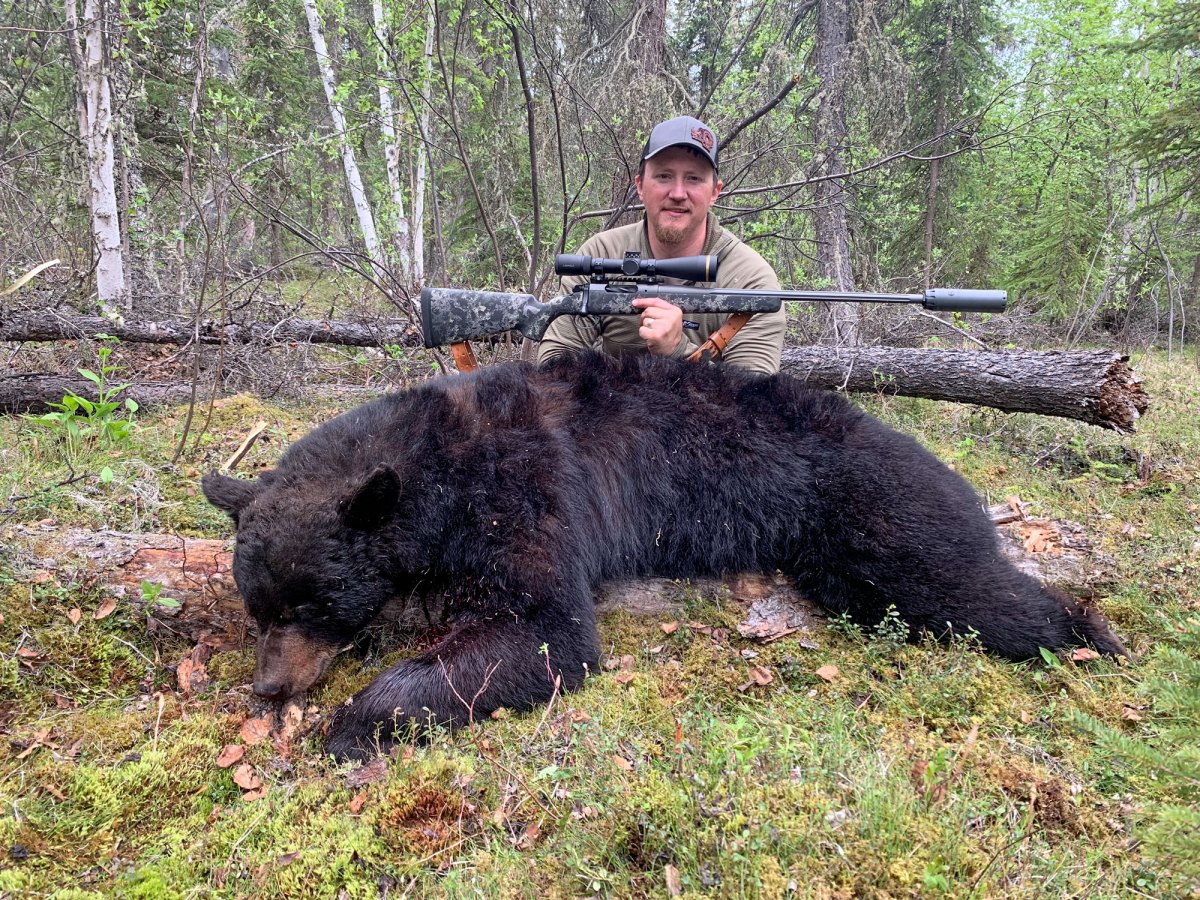Where to Hunt Deer: The 5 Best Whitetail States for DIY Hunters
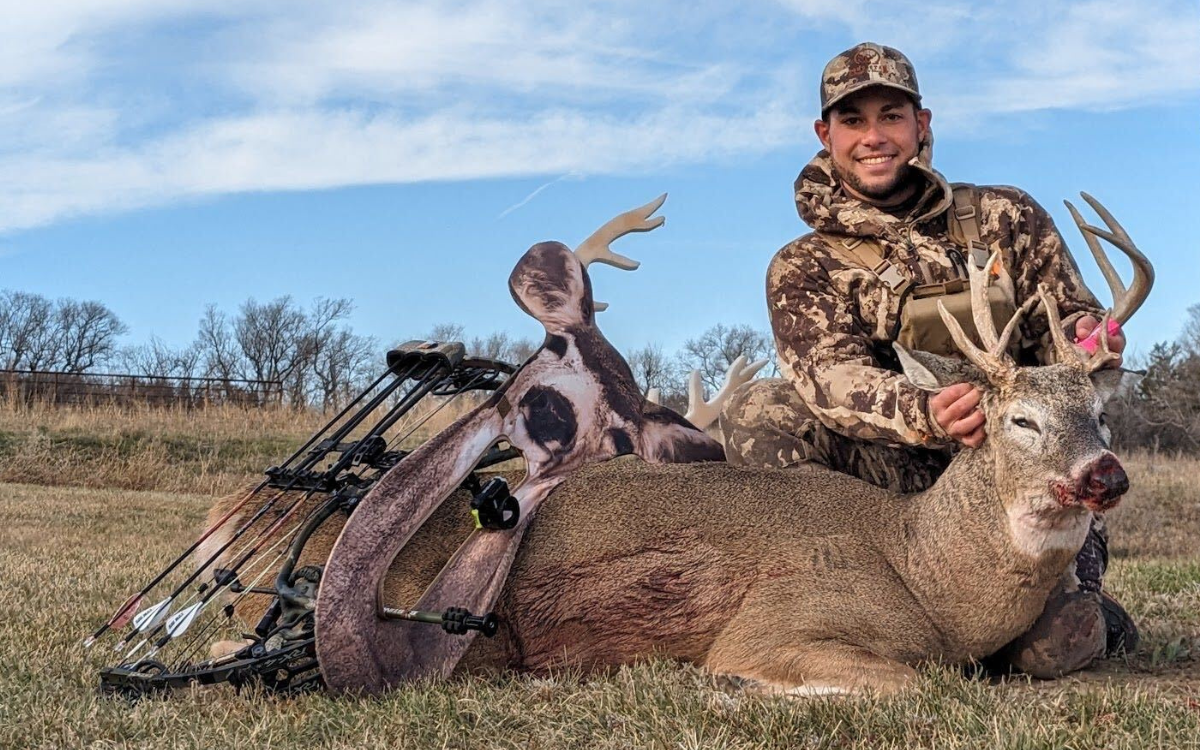
Don’t get it twisted: The classic big-buck destinations are still great. Kansas, Iowa, and Illinois still produce giants every year. Texas deer hunters still kill more whitetails than anyone else. And up in Alberta and Saskatchewan, massive Northwoods whitetails still come to bait piles and rattling horns.
But to access these trophy hunting opportunities, all of these states require non-resident hunters to draw tags in a lottery, hire an outfitter, or throw down for a pricey lease — or in some cases, a combination of the three.
Meanwhile, there’s a whole generation of deer hunters, inspired by the likes of The Hunting Public and Whitetail Adrenaline who dream of hitting the road to chase big bucks out of state, on the cheap. For those deer hunting dirtbags, we’ve compiled the following list of states that offer over-the-counter tags and plenty of free hunting access. Plus, we’ve pulled together some tips on how to find deer when you get there. —A.R.
The Best DIY Whitetail Hunting States
Ohio
Non-Resident Licence Fee: $181
Antlered Deer Harvested Statewide in 2024: 97,618 (41 percent of harvest)
Season Dates:
- Archery: Sept. 27 – Feb. 1
- Firearm: Dec. 1 – Dec. 7, Dec. 20 – Dec. 21
- Muzzleloader: Jan. 3 – Jan. 6
If you’re a whitetail hunter who hasn’t been living under a rock for the last decade or so, then you shouldn’t be too surprised to see Ohio on this list. Generally speaking, Ohio is one of the best “big buck” states our country has to offer. The CJ Alexander buck, along with legally hunted bucks like this 200-class non-typical buck, or this 200-class almost typical buck, show you just how much potential this state has.
With a pretty nominal non-resident license fee, I’m surprised more people don’t head to the flatland or southeastern hills to chase the phenomenal bucks that live in Ohio. While the state isn’t known for expansive public lands, there are more than half a million acres of public ground for DIY hunters to explore.
The best part about being a non-resident hunter in Ohio is the state’s liberal season dates. Archery season runs continuously for four-plus months, giving you ample opportunity to hunt Ohio after you’re done hunting at home. Rather than feeling pigeonholed into a week or even a long weekend trip, you might be able to hunt multiple times throughout the year.
Also, Ohio does allow baiting on private land. If that’s up your alley, it might be worth rapping on a few doors to see what kind of opportunities unfold.
Wisconsin
Non-Resident License Fee: $200
First-Time Buyer Non-Resident License Fee: $100
Antlered Deer Harvested Statewide in 2024: 161,512 (50 percent of harvest)
Season Dates:
- Archery: Sept. 13 – Jan. 4
- Firearm: Nov. 22 – Nov. 30
- Muzzleloader: Dec. 1 – Dec. 10
Wisconsin is steeped in deer hunting tradition. With rolling ag country in the southern half of the state, river bluff country in the western part of the state, and big woods up north, Wisconsin has a variety of deer hunting habitat for a non-res to explore. The Western side of the state (like famed Buffalo County) is known for producing trophy bucks, but the truth is that there are big bucks to be found in all corners of Wisconsin.
With an affordable non-resident license fee, and an even cheaper option for first-time buyers, Wisconsin becomes an incredible option for an out-of-state hunt. Plus, with millions of acres of public land (especially in the North), it truly is the land of opportunity. Deer hunters considering a Wisconsin trip would be wise to also investigate private lands that allow public hunting access. These include managed forest lands and voluntary public access grounds, which are often not as crowded as state wildlife areas.
Similar to Ohio, Wisconsin has a very liberal archery season, spanning from the end of summer through the new year. Spend time scouting and plan on getting there before the crowded firearms season in late November. (Also, like Ohio, Wisconsin allows crossbow hunting during the regular archery season.) The gun season in Wisconsin is nothing short of a cultural event. Seemingly everyone and their brother is throwing on blaze orange, tromping around the woods, and maybe having a beer or two after the hunt. It’s a great time, but not exactly the ideal setting for a nonresident hunter to pursue his big buck dreams.
Nebraska
Non-Resident License Fee: $335
Non-Resident Deer Permit Sale Date: July 23, 2025
Antlered (Whitetail) Deer Harvested Statewide in 2024: 21,415 (54 percent of harvest)
Season Dates:
- Archery: Sept. 1 – Dec. 31
- Firearm: Nov. 15 – Nov. 23
- Muzzleloader: Dec. 1 – Dec. 31
While Heartland states like Kansas and Iowa get a lot of attention, so much so that they’ve removed OTC opportunities, Nebraska has flown under the radar. However Nebraska is anything but a flyover state for big buck hunters. According to the NDA, Nebraska ranked 10th for states with a buck harvest of 3½ years or older in 2022 (an older age class typically means bigger buck).
With endless agriculture and grasslands, the habitat is ripe for growing big bucks. In my experience, along with what I’ve been told by other experienced deer hunters, the river bottoms are your best bet for finding the whitetail deer. Unlike the other states on this list, you should be aware that Nebraska also has a mule deer population that lives more in the hills and sagebrush flats, but those tags are harder to come across.
Nebraska doesn’t have a ton of federal or state land, but it does have more than 1 million acres of publicly accessible lands, including privately-owned lands enrolled in the Open Field and Waters program. In my opinion, this gives it an advantage over some other plains states. In Colorado or Wyoming, for example, most of the whitetail population is located in the Eastern portions of those states, which are mainly owned by cattle ranches and agricultural companies. That can make it more difficult to find a place to deer hunt. But with whitetail spread all across Nebraska, there are plenty of options for the DIY hunter looking to stretch their legs.
While you can likely find a spot to hunt from a treestand, Nebraska also gives you the opportunity to spot and stalk whitetail deer, something that’s a bit less common in the East and Midwest. If you haven’t tried it yet, but have a hunt like that on your bucket list, I wouldn’t overlook Nebraska’s OTC deer permit hunts.
It’s worth noting that while Nebraska is an OTC option, they do set a statewide non-resident permit cap of 10,000 total either-sex/buck deer permits of all types combined. Nonresidents may buy any limited deer permits in any unit subject to availability and within permit limits. So don’t wait until the last second to plan your Nebraska hunt, as the unit and permit may already be sold out. Permits go on sale July 23 this year and are issued on a first-come, first-serve basis.
Indiana
Non-Resident Deer License Fee: $240
Deer License Bundle (Archery, Firearm, Muzzleloader): $550
Antlered Deer Harvested Statewide in 2024: 59,649 (47 percent of harvest)
Season Dates:
- Archery: Oct. 1 – Jan. 4
- Firearm: Nov. 15 – Nov. 30
- Muzzleloader: Dec. 6 – Dec. 21
In the past few years, we’ve made bold statements about Indiana becoming the next big buck state. Every fall, giant bucks are taken in Indiana, like this 184-inch giant or this 170-class Booner. Plus, similar to Ohio, you can buy your tag OTC any time.
But, where Indiana falls a bit short for most DIY hunters is the general lack of public land throughout the state. Much of the state is privately owned, and it’s not going to be the easiest state to gain permission through door knocking. If you want to hunt public ground in Indiana, you’ll likely find yourself investigating the Hoosier National Forest.
With over 200,000 acres of huntable land, the Hoosier National Forest has lots of hunting opportunities, and plenty of big bucks. What’s cool about the Hoosier is that it’s spread out in medium-sized blocks. It’s not just one single large parcel with 20 trucks in every parking lot. So if you’re a diligent e-scouter and you’re clever about avoiding hunting pressure, this is the place to go.
Indiana is also another state with liberal hunting season dates, giving out-of-state hunters plenty of time to make a return trip. And for those of us living in the East or South East, it’s not as far of a haul as, say, Iowa or Nebraska.
Pennsylvania
Non-Resident License Fee: $102
Antlered Deer Harvested Statewide in 2024: 175,280 (36 percent of harvest)
Season Dates:
- Archery: Oct. 4 – Nov. 15
- Firearm: Nov. 29 – Dec. 13
- Flintlock: Dec. 26 – Jan. 19
I bet you didn’t see Pennsylvania coming when you started down this list. While my home state of Pennsylvania has a deep hunting tradition, there was a time when you were lucky to see a two-year-old 8 point here. Thankfully, with antler restrictions and furthering herd management culture across the hunting space, those days seem to be a thing of the past. This 18-point monster and even this 14-point giant provide a small glimpse into the big bucks living in the Pennsylvania deer woods.
I honestly believe that Pennsylvania is quietly becoming a big buck state, and traveling hunters should take notice. In the past decade or so, I’ve seen more and more big bucks hit the ground, and I’ve even had the opportunity to chase a few myself — all on public land. Plus, with the recent lifting of the ban on Sunday hunting, a weekend trip makes a lot more sense for deer hunters living in the Northeast.
With millions of acres of public land, big woods, agricultural lands, and even suburban hunting opportunities, Pennsylvania has it all. Tack on the fact that the non-resident license will probably cost less than the gas you spend to get here and you’ve got a recipe for a fun out-of-state hunt. Your license includes one antlered deer tag, one fall turkey tag, one spring turkey tag and small game hunting privileges for one license year, too.
All of that said, don’t show up in Pennsylvania expecting an easy hunt. To find a big buck you’ll likely have to make long hikes into the mountains, outsmart pressured bucks, and avoid plenty of other hunters. The Allegheny National Forest, along with much of central and northern Pennsylvania offer an immense amount of game lands and state forest, giving you plenty of opportunities to find a spot with a big buck that’s off the beaten path. —D.H.
Use Digital Mapping to Narrow Your Hunt Area
Once you’ve selected a state and zone you’d like to hunt, the next step is firing up a digital mapping app to zero in on a region. Ideally, your scouting work will have two phases. The first is in-depth digital scouting and the second is boots-on-the ground speed scouting in the field.
Through e-scouting, search for publicly accessible lands that are at least a 1.5-hour drive from any metropolitan areas. The farther you can get off the beaten path, the better. Even midsized Midwestern towns with nice hotels and good restaurants will hold armies of nonresident and resident hunters. So cross these areas off your map, too.
Once you locate a more remote region with accessible land, start evaluating specific parcels. Look for tracts of land that connect big sections of private or un-huntable habitat. Also look for parcels that have less-than-obvious access points. Pin potential spots that would require a hunter to cross a river or marsh, hike over a steep ridge, or trek a long distance off trail. All these features will help weed out the competition.
Pin a bunch of these spots — ideally you’ll have five to seven in one driveable area. Then, go investigate them in person. Look for buck sign, but also look for hunter sign. If you stumble into a bunch of treestands and trail cameras, search thicker cover nearby. Or, if the area just seems too congested, keep searching for better ground.
When it’s finally time to hunt, make sure you’ve got a good list of A spots and B spots saved on your map. From there, hunt around other hunters and target the hottest sign. Do not show up planning to hunt one specific ridge, only to find out that another hunter is already set up there. The beauty of being a nonresident hunting in a new area is that you’ve got no preconceived biases based on previous seasons in the area. Any spot could be as good as the next. So use creativity and flexibility to your advantage.
More Tips for Finding Whitetails on Public Land
- Find public access on private land. Big national forests and wildlife management areas obviously pop on any good digital mapping app. But private lands that offer public access are usually more likely to be overlooked. So investigate each state’s voluntary public access program and then be sure to pull these lands up when e-scouting. In states like Wisconsin and Pennsylvania, investigate timber company lands that allow public hunting.
- Find the bedding areas. One quick way to break down large tracts of forested land is to use the “leaf-off imagery” mode in onX Hunt. This shows you an aerial view of the area after leaves have fallen. In this view, stands of evergreen (where deer love to bed) will pop green. Find secluded stands of evergreen next to key food sources and you’ll cut down your speed scouting time exponentially.
- Knock on doors like a pro. Door knocking to acquire free hunting permission is a bit of a lost art. That’s because most corners of big-buck country now have outfitters, plus local (and non-local) hunters, leasing up ground. But it is still possible to acquire hunting permission by simply showing up and asking (nicely) for it. But to have success here, you’ve got to focus your efforts in the proper areas. Start by searching property details in the region you want to hunt. Look for small and midsized properties that have landowners who live there, on the property. Essentially, you want to find family farms with one owner. Large lands that are owned by trusts or owners with addresses in, say, California, are not likely to grant hunting permission. After that, cross-reference your findings with a quick online search for outfitters in the area. If there aren’t any guides working that neighborhood, you’ve got a much better chance of gaining free permission. Also, try asking for late archery season after the farmers’ friends and family have already finished their hunting.
- Find the food. If you’ve got a hunt in October planned out, it’s hard to beat a secluded oak stand that’s chalk full of acorns. In onX, use the “acorn producing oaks” layer to find oak stands scattered throughout the big timber stands you’ll be hunting. Pair these areas with potential bedding locations and you’ve got a recipe for success.
- Let the cameras scout for you. Where legal, hang cellular trail cameras and consider using onX’s new feature which links directly to Moultrie cell cams. This allows you to remotely run a scouting program on a variety of properties and see it all on your map.
- Be patient. It can be tempting to jump around from spot to spot. But most of the time it’s more effective to be patient and hunt hard. Once you have a spot you like (one that seems to be getting minimal pressure from other hunters) trust your cameras and your scouting and wait it out. You can’t kill a buck if you’re not out there waiting for him. If time runs out on your hunt, you can always plan a return trip.
Final Thoughts on Where to Hunt Deer
Remember that as a nonresident hunter, you’re a visitor in foreign land. A new spot to you might be the river bottom where local Joe’s granddaddy taught him how to gut a deer. So, act accordingly. Yes, you have a right to access public lands just like the locals do. But remember that courtesy and communication go a long way. So do your best to work with and work around other hunters wherever you go. You’ll have a lot more fun, and more success, that way. —A.R.
Read the full article here




